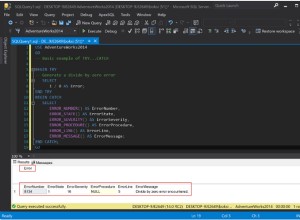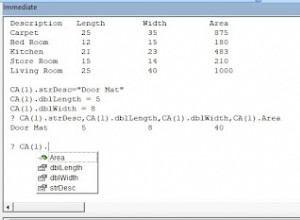Forse qualcosa del genere:
Prima i dati del test:
CREATE TABLE #tbl (AccountManager VARCHAR(100), Action VARCHAR(100),Count INT)
INSERT INTO #tbl
VALUES
('Joe','Client Negotiation',10),
('Bloggs','Closing',1),
('Aunty','Email',12),
('Marie','Preparing Contract',32)
Se sai che le colonne sono statiche. Quindi puoi farlo:
SELECT
AccountManager,
ISNULL([Client Negotiation],0) AS [Client Negotiation],
ISNULL([Closing],0) AS [Closing],
ISNULL([Email],0) AS [Email],
ISNULL([Preparing Contract],0) AS [Preparing Contract]
FROM
(
SELECT
tbl.AccountManager,
tbl.Action,
tbl.Count
FROM
#tbl AS tbl
) AS p
PIVOT
(
SUM([Count])
FOR [Action] IN([Client Negotiation],[Closing],[Email],[Preparing Contract])
) AS pvt
Altrimenti devi fare un pivot dinamico come questo:
Prima i nomi univoci delle colonne:
DECLARE @cols VARCHAR(MAX),
@colsWithIsNull VARCHAR(MAX)
;WITH CTE
AS
(
SELECT
ROW_Number() OVER(PARTITION BY tbl.Action ORDER BY tbl.Action) AS iRank,
tbl.Action
FROM
#tbl AS tbl
)
SELECT @cols = COALESCE(@cols + ','+QUOTENAME(Action),
QUOTENAME(Action)),
@colsWithIsNull=COALESCE(@colsWithIsNull + ',ISNULL('+QUOTENAME(Action)+',0) AS '+QUOTENAME(Action),
'ISNULL('+QUOTENAME(Action)+',0) AS '+QUOTENAME(Action))
FROM
CTE
WHERE
iRank=1
Quindi il pivot dinamico in questo modo:
DECLARE @query NVARCHAR(4000)=
N'SELECT
AccountManager,
'[email protected]+'
FROM
(
SELECT
tbl.AccountManager,
tbl.Action,
tbl.Count
FROM
#tbl AS tbl
) AS p
PIVOT
(
SUM([Count])
FOR [Action] IN('[email protected]+')
) AS pvt'
EXECUTE(@query)
Quindi nel mio caso lascerò cadere la tabella temporanea:
DROP TABLE #tbl




